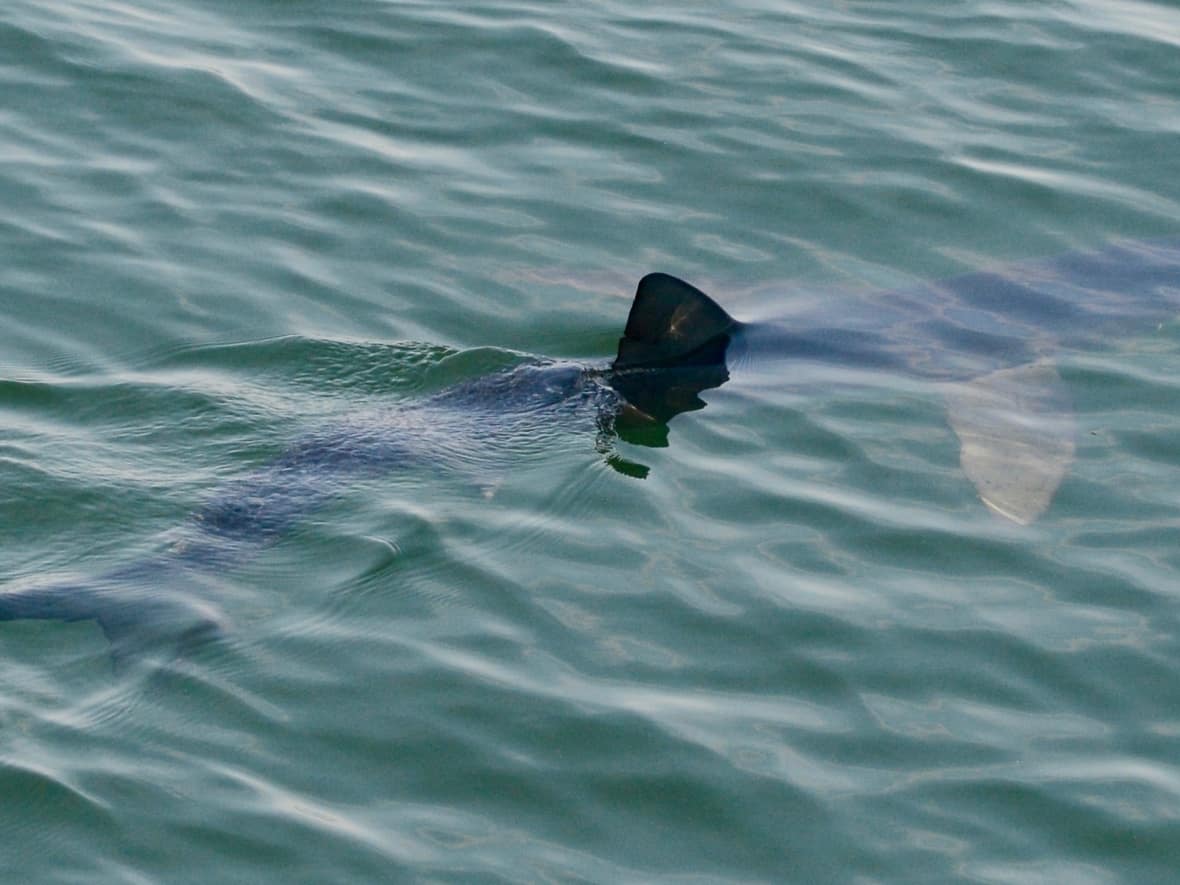Shark rarely seen in Bay of Fundy spotted 31 times in past week

Biologists working off Grand Manan, N.B., have spotted a shark species rarely seen in the Bay of Fundy's waters 31 times in the past week.
"Blue sharks are typically rare or infrequent visitors to the Bay of Fundy, but not in 2022!" said the Grand Manan Whale and Seabird Research Station in a Facebook post.
A blue shark was also spotted near Eastern Wolf Island by the crew and passengers of a Quoddy Link Marine whale watching vessel, according to Danielle Dion, the company's senior naturalist.
"This is my 21st season with Quoddy Link Marine," Dion said. "So I've done thousands of whale watches. And I've seen sharks in [the Bay of Fundy], but I've never seen a blue shark."
WATCH | See a lone blue shark enjoying the Bay of Fundy:
She said it made for a special experience for the day's passengers.
"When the crew and the naturalists are getting really excited, it obviously rubs right off on the passengers."

Temperature rise could explain sightings
The number of blue shark sightings may be going up because the water conditions now match the species' preferences, according to Fred Whoriskey, the executive director of the Ocean Tracking Network at Dalhousie University.
"We're having some very strange gyrations in the upper atmosphere and the wind directions and things," Whoriskey said. "We suddenly got into the right conditions where the surface waters have warmed up, and it's brought in the blue sharks."
While he hasn't been studying blue sharks in the area where the Grand Manan research station has been spotting them, Whoriskey has been conducting research into the species in the waters off Nova Scotia. This year, that research found an exodus of smaller female blue sharks and an influx of larger male blue sharks due to a water temperature increase.
The area he's studied, and that near Grand Manan, both have similar waters to the Gulf of Maine, so he speculates warming temperatures have also drawn the species to the Bay of Fundy.
Increase in sightings doesn't correlate with population
Despite the fact that more blue sharks are being spotted off New Brunswick's coasts, this isn't an increase in blue sharks, Whoriskey said.
He said this is simply an increase in distribution and it will be temporary.
"The alarm bells have been going off very recently surrounding blue shark populations," Whoriskey said. "They went from being relatively of no concern to suddenly very concerned because of sudden declines and problems related to fishing."

The distribution of blue sharks stretches far and wide, as mature blue sharks move in a gyre — meaning a large system of circulating currents in the ocean.
Blue sharks travel up the coast of the United States and into Canada, loop south of Iceland, swim past Europe, down to the equator, then back north, he said.
"They circle around and around and around in that gyre for the rest of their life. So they cover some really large distances," he said.
Some of the blue sharks tagged as a part of the research Whoriskey is involved with swam from Nova Scotia to the Bahamas for the winter.
Species not among most dangerous sharks
Dion said passengers can be a little apprehensive when they see sharks because the first thing that comes to mind is a great white.
But Whoriskey said the arrival of blue sharks shouldn't be concerning.
"We actually routinely spend time swimming with the blue sharks," he said. "And we actually take groups of students out and take them snorkeling with the blue sharks."


